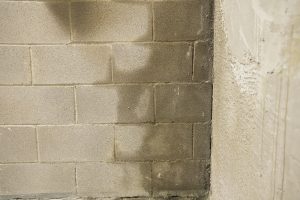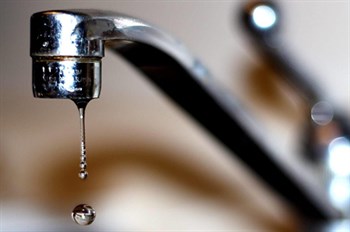How to Locate and Address Water Leaks in the Bathroom: Expert Tips
Schedule Appointment NowAlmost everyone seems to have their own unique thinking with regards to How to Check for Bathroom Leaks.

Washroom leakages are annoying as they interrupt your day's strategy. It is an alleviation that many restroom leaks are very easy to fix and also discover, with minimal price implications.
Having a water leakage in shower room can be stressful to the home owner. But dealing with the leak comes to be an easy problem if you know what to do. So, this short article is essential as a house overview to repairing a water as well as spotting leakage in bathroom. It does not change the demand for expert knowledge. The article functions as a "first aid" when you require an emergency situation response to a water leakage in washroom.
Detection and also Repair of Water Leak in Washroom
Water leak in shower room generally results from plumbing as well as pipeline mistakes. There are several kinds of shower room leakages. You might require a basic knowledge of these leak types to find the water leakage in shower room. Below are the typical washroom leaks and take care of ideas:
Splash Leaks
These commonly result from water splashing on the washroom floor from the bathtub. It issues of using a poor shower drape or worn bath tub lining. It harms the restroom floor as well as might trigger rot to wood floors and also bathroom doors. The water normally pools around the tub or shower. This might result in worse shower room damage without prompt handling.
What to Do
This washroom leakage is the most convenient to repair. You just need to change the curtains or recaulk the tub or shower. You may need to transform these to protect against additional damages if the leakage has harmed the shower room flooring or door. The good news is that you can include a plumbing professional to help with the washroom repair work.
Commode Leaks
Occasionally, water leakages from the toilet as well as swimming pools around the commode base. It is an eyesore in the bathroom and requires timely attention. Sometimes, it arises from a loosened connection in between the storage tank as well as the commode. This creates water to drip from the tank to the floor. It might additionally result from splits in the toilet dish or a faulty shut-off shutoff.
What to Do
You just need to tighten them if there are loosened screws between the cistern and commode. Sometimes you might need to reapply wax on the gasket or call a shower room leak specialist to change used or broken components.
Clogged Washroom Sinks
Sometimes, the water leak in shower room results from sink blockages. This is typically an annoyance to homeowners and also might be unpleasant. Blockages might result from the accumulation of soap residue, hair fragments, or particles that obstruct the drainpipe. It is easy to manage clogs, as well as you might not need professional abilities.
What to Do
You can use a drain serpent to remove the debris in the drain and let the stagnant water circulation. Drain pipes cleansers are likewise readily available in stores and are simple to utilize.
Final thought
Water leakages in the bathroom are preventable events in the house. Upkeep and regular checks aid to keep whatever in good shape. You can never be as well cautious, and also these occasions still take place. When they do, fix them quickly, or engage the solutions of a specialist.
The article serves as a "first help" when you need an emergency response to a water leakage in bathroom.
Water leak in restroom typically results from plumbing and pipeline faults. You might require a basic understanding of these leakage types to identify the water leak in shower room. It harms the bathroom floor as well as might create rot to wood floors and restroom doors. Occasionally, the water leakage in washroom results from sink clogs.
Water Leaking in the Bathroom Wall
A GUIDE TO FINDING LEAKS IN BATHROOM WALLS
Paint or Wallpaper Peeling: This sign is easily spotted, so it cannot be missed. A leak in the wall can lead to wallpaper that separates along seams or paint that bubbles or flakes off the walls. Musty Smells: The damp flooring and plaster inside the wall grow an odor similar to wet cardboard as water slowly drips from a leaky pipe inside the wall. You can find leaks hidden beneath a musty odor. Growing Stains: The interior of a wall affected by a leaky pipe sometimes becomes infested with mold. Often, your indicator of a hidden plumbing problem is a growing strain on otherwise clean plaster. Structural Damage: Do not overlook constant moisture inside the walls of bathrooms when ceilings or floors become structurally compromised. Water-damaged walls can damage adjacent surfaces and stain flooring and ceilings. Unusual Discoloration: The wet spots may eventually dry when a leak penetrates deeper inside a wall. The stains they leave behind are paler than the adjacent paint or surface. Dripping Sound: It is common to hear dripping sounds inside walls when water runs down them. A squeaking noise can be heard while turning off a valve in a sink, bathtub, or shower. When flushing the toilet, you may also hear this noise. A GUIDE TO REPAIRING WATER LEAKAGE
Verify The Wall Leak: Shut down your main water supply and note the reading on your water meter. If the meter reading rises after a few hours, the leak is inside the house. In the absence of any changes, the leak may be the result of clogged gutters or drains. Turn off the water: You can turn off the water after you confirm the leak is within the walls. If you’re beginning repairs, drain as much water from the pipes as possible. Find & Fix The Leakage: Locate the wettest area on the wall with a moisture meter or infrared camera. Patch kits can stop the leak, but the fix might only be short-term. In the next few days, double-check the area to ensure the leak is no longer present. Removing mold and cleaning all surfaces: Dish soap and warm water should be used to clean affected areas. Bleach and water are recommended for disinfecting nonporous surfaces. Fan and dehumidifier running will speed up drying time. Remove mold growth immediately from walls, ceilings, and other surfaces. https://wlstaton.com/how-to-find-and-repair-water-leaking-in-the-bathroom-wall/

Hopefully you enjoyed reading our piece about How to Check for Bathroom Leaks. Thanks a lot for finding the time to browse our blog. You should set aside a second to share this blog posting if you enjoyed reading it. I cherish reading our article about How to Detect and Fix a Bathroom Leak.
Estimate Free